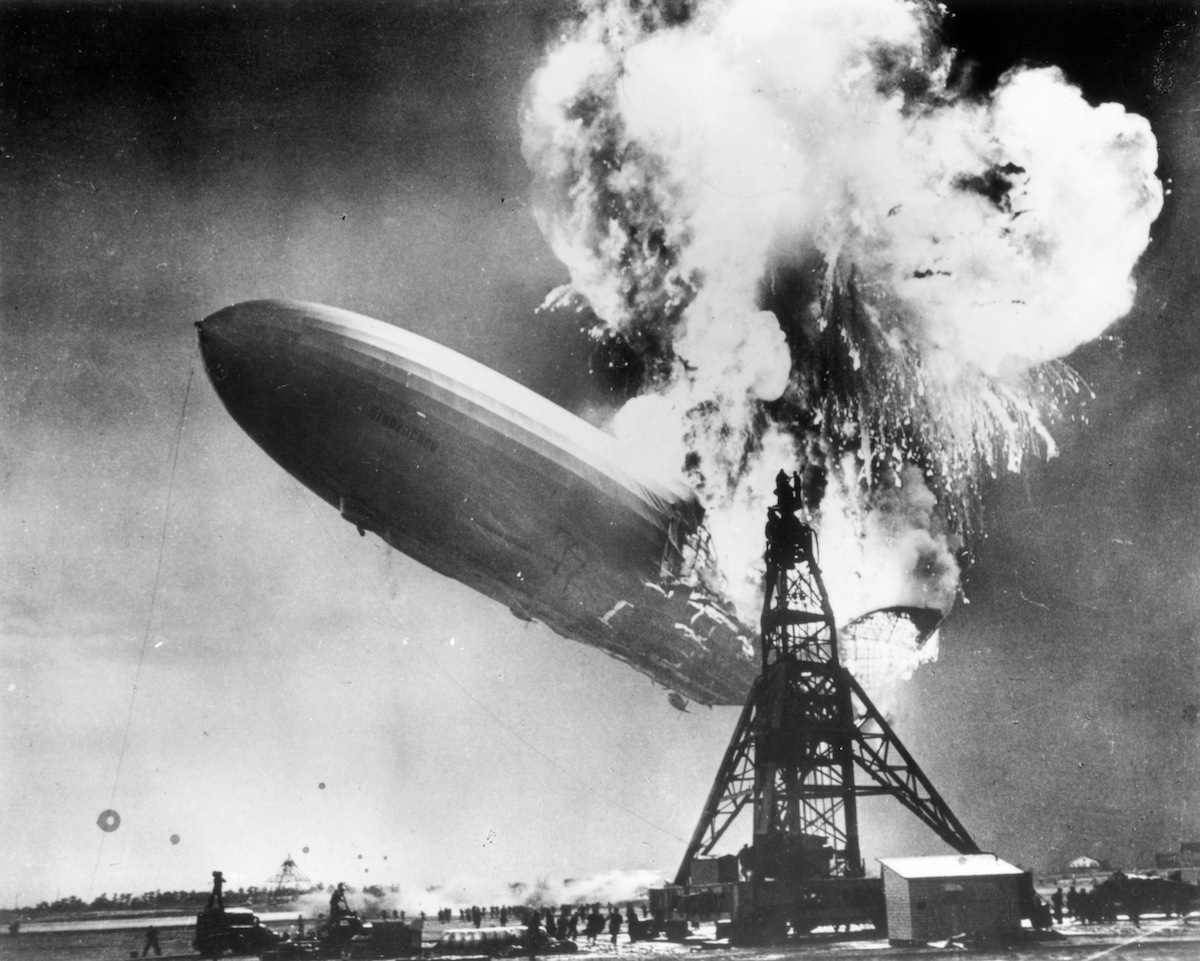
JetBlue apologized and deleted a “not well thought-out” tweet on Thursday, after some of the airline’s followers noted that the pun in the tweet—”Oh, the Bluemanity!”—was a reference to one of the 20th century’s worst air-travel disasters. But, though you might expect better from someone who works in the air-travel industry, it’s also easy to see how a social-media writer on the look out for words that rhyme with blue might not have thought about the implications of this particular pun. After all, the disaster to which it refers took place long before commercial aviation in planes was a common travel option.
Here’s the reason why “bluemanity” caused a controversy:
In 1937, travel by dirigible—a means of transportation that uses lighter-than-air gas to stay up—was thought to be the safest way to go. The Hindenburg, one such dirigible, had been making the voyage back and forth between Frankfurt and New Jersey for months already. Its captain had made nearly 200 transatlantic flights. It was, according to a TIME report that year, Nazi Germany’s “greatest transport pride.” Everything was going fine during its first 1937 trip to the U.S., until it came time to land on May 6.
For reasons that were not immediately clear—some suggested sabotage, though static electricity has proven more likely—the hydrogen with which its balloon was inflated caught fire. All 803 ft. of it burned up in about 32 seconds, killing dozens of passengers and crew members. It was, at that point, the worst accident in the history of commercial aviation.
Meanwhile, New Jersey radioman Herbert Morrison was recording a transcription of the landing that would be broadcast the next day; because it wasn’t the first such landing, it wasn’t a big enough deal to cover live. As he narrated what he saw, the poetic tone (it was “like a great feather” at first) turned panicked. TIME reported his words the following week:
“It is practically standing still now. The ropes have been dropped and they have been taken hold of by a number of men on the field. It is starting to rain again. The rain had slacked up a little bit. The back motors of the ship are holding it just enough to keep it—
“IT’S BURST INTO FLAME!
“Get out of the way! Get this—Charley, get out of the way please! It is bursting into flames. This is terrible! This is one of the worst catastrophes in the world! The flames are 500 ft. into the sky. It is a terrific crash, ladies and gentlemen. It is in smoke and flames now. Oh, the humanity! Those passengers! I can’t talk, ladies and gentlemen! Honest, it is a mass of smoking wreckage. Lady, I am sorry. Honestly, I can hardly—I am going to step inside where I can’t see it. Charley, that is terrible! Listen, folks, I am going to have to stop for a minute because I have lost my voice.”
Morrison’s exclamation—”Oh, the humanity!”—became famous, and hydrogen-filled airships became a matter of history too, as that was pretty much the end of their commercial use. The only upside was that it was also the end of Nazi transportation pride, as Germany did not have any helium, which would have been a safer gas to use for flight.
“The Hindenburg represented the world and for that reason our eyes lighted when we saw its silver grandeur in the sky,” wrote columnist Dorothy Thompson, according to TIME. “It contended with another world which might make it at any moment an object of terror and of hatred.”
Read the full story here in the TIME Vault: “Oh, the Humanity!”
More Must-Reads From TIME
- The 100 Most Influential People of 2024
- Coco Gauff Is Playing for Herself Now
- Scenes From Pro-Palestinian Encampments Across U.S. Universities
- 6 Compliments That Land Every Time
- If You're Dating Right Now , You're Brave: Column
- The AI That Could Heal a Divided Internet
- Fallout Is a Brilliant Model for the Future of Video Game Adaptations
- Want Weekly Recs on What to Watch, Read, and More? Sign Up for Worth Your Time
Write to Lily Rothman at lily.rothman@time.com